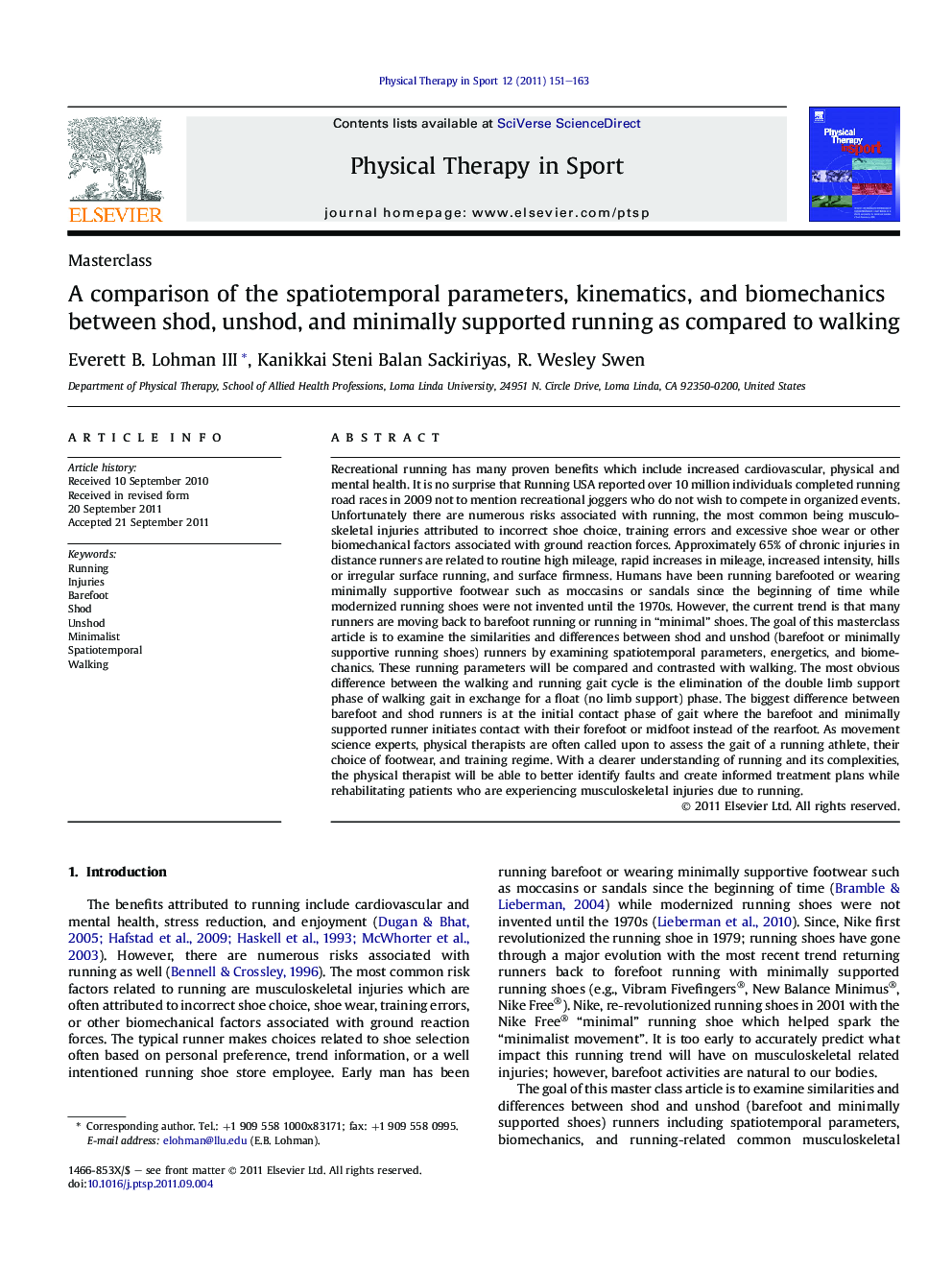| Article ID | Journal | Published Year | Pages | File Type |
|---|---|---|---|---|
| 2705968 | Physical Therapy in Sport | 2011 | 13 Pages |
Recreational running has many proven benefits which include increased cardiovascular, physical and mental health. It is no surprise that Running USA reported over 10 million individuals completed running road races in 2009 not to mention recreational joggers who do not wish to compete in organized events. Unfortunately there are numerous risks associated with running, the most common being musculoskeletal injuries attributed to incorrect shoe choice, training errors and excessive shoe wear or other biomechanical factors associated with ground reaction forces. Approximately 65% of chronic injuries in distance runners are related to routine high mileage, rapid increases in mileage, increased intensity, hills or irregular surface running, and surface firmness. Humans have been running barefooted or wearing minimally supportive footwear such as moccasins or sandals since the beginning of time while modernized running shoes were not invented until the 1970s. However, the current trend is that many runners are moving back to barefoot running or running in “minimal” shoes. The goal of this masterclass article is to examine the similarities and differences between shod and unshod (barefoot or minimally supportive running shoes) runners by examining spatiotemporal parameters, energetics, and biomechanics. These running parameters will be compared and contrasted with walking. The most obvious difference between the walking and running gait cycle is the elimination of the double limb support phase of walking gait in exchange for a float (no limb support) phase. The biggest difference between barefoot and shod runners is at the initial contact phase of gait where the barefoot and minimally supported runner initiates contact with their forefoot or midfoot instead of the rearfoot. As movement science experts, physical therapists are often called upon to assess the gait of a running athlete, their choice of footwear, and training regime. With a clearer understanding of running and its complexities, the physical therapist will be able to better identify faults and create informed treatment plans while rehabilitating patients who are experiencing musculoskeletal injuries due to running.
